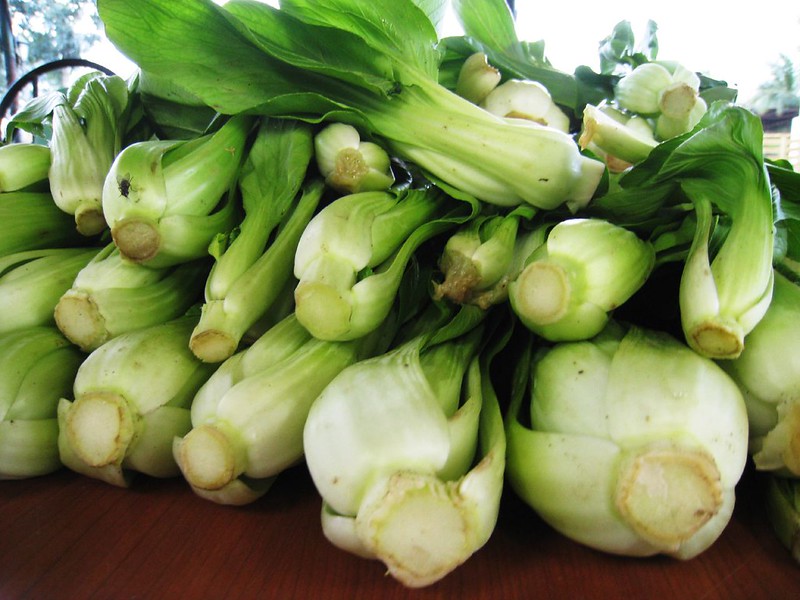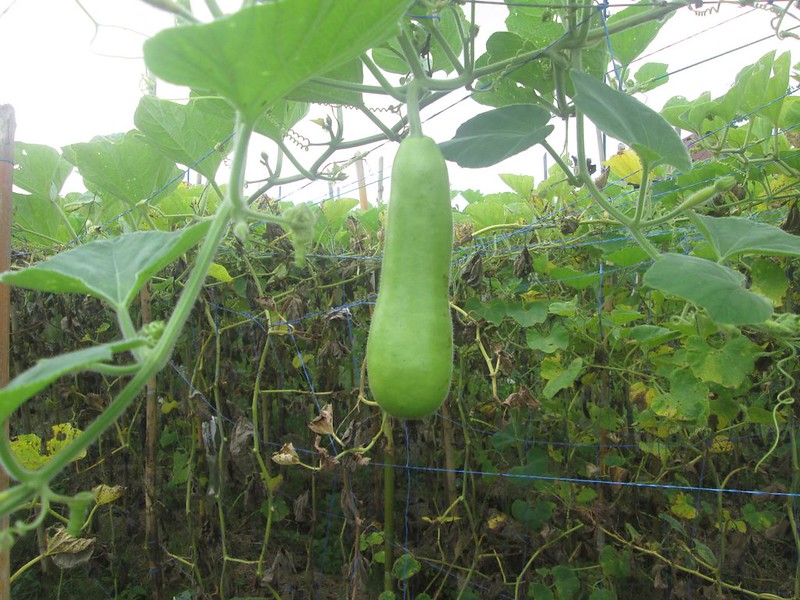The Philippines is home to some amazing cuisine and very interesting vegetables. Types Of Philippine Veggies From exotic fruits like lychee nuts, durian fruit or mangosteen, you can’t go wrong with Filipino food.
If that’s not enough – there are also many types of rice, noodles and other tasty dishes you should try when visiting the country.
So if you’re planning your vacation in The Philippines, make sure to include eating delicious Filipino food as an important part of your trip. Here, we’ll take you through all the best vegetables that the Philippines has to offer.
Bear in mind, some items mentioned on this list aren’t technically vegetables. They have been included because they are used in the same way many vegetables are.
Some of these include gourds like squash, and a few others. A lot of these kinds of fruit are often referred to as vegetables for this reason, as they are used in a way that is not usually seen with the popular fruits we all know and love, like apples or bananas.
Philippine Vegetables
1. Sigarilyas – Winged Bean

The winged bean, also called cigarillas, sigarilyas, or the goa bean, are large beans that look like they have frills on them. They grow in large vines and are used in a number of traditional Philippine recipes, including desserts, soups, curries and salads.
These beans taste slightly sweet, but their flavor doesn’t last long once cooked. There are two main varieties of sigarilyas: one is white and the other yellow.
Both of these flavors have a milder taste than most other types of beans. Sigarilyas are typically served as a side dish in Filipino restaurants.
2. Kangkong – Water Spinach

Water spinach, or kangkong, is another popular Philippine vegetable. It is harvested only during its first year of growth.
This plant tastes similar to spinach, and it grows quickly, so you don’t need to wait too long before harvesting it. It is commonly eaten raw, or steamed lightly. Kangkongs are a great addition to stir-fry dishes when cooking meat, poultry or seafood. It is also an excellent source of vitamins C and K.
3. Sitaw – String Beans

String beans are small green beans that grow in bunches along the vine. They are an essential ingredient in the diet, and are always found at roadside stalls across the country.
They are often boiled and then added to various dishes. You will frequently see them sold fresh, but sometimes they might be canned, dried or frozen. String beans have a very mild taste, and don’t actually taste of much. They are known to be good for digestion.
4. Kalabasa – Squash

Squash is a type of gourd that is native to Southeast Asia. Kalabasa are grown primarily in the Philippines, where they are considered a delicacy.
They are available throughout the year, and are used in dishes such as curries, stews, soups and salads. They are typically baked until soft, and then peeled and mashed into a paste.
These ingredients, though technically fruit, are a healthy alternative to potatoes, since they contain less starch and more protein.
5. Sayote – Chayote

Chayote (also known choko) is a popular ingredient in the Philippines. It is also technically a fruit, but is used much like many vegetables are.
The Sayote belongs to the squash family and is used in recipes such as ginisang. It has a mild flavor, which makes it perfect for adding texture to sauces, soups and casseroles. These vegetables can easily be substituted when making any recipe that calls for zucchini.
6. Okra – Ladies’ Fingers

Okra is a common vegetable in the Philippines. This flowering plant belongs to the mallow family and has a grassy, sweet flavor. Okra can be eaten both raw and cooked.
When cooked, okra becomes tender and has a slimy consistency. This sliminess helps to thicken sauces and gravies, and adds a nice creaminess to dishes.
Okra is usually fried, roasted, boiled or stewed with rice. It can also be ground up and used as a thickening agent. In some places, okra is used to make a drink called okada, which is flavored with coconut milk.
7. Bataw – Hyacinth Beans

Hyacinth beans are a popular snack food in the Philippines. They are a member of the legume family and are typically fried. Their flavor is similar to lima beans, but the shape of the pods is different.
Bataws are also used to make a traditional Filipino dish called sisig, which is made by mixing the beans with pork, soy sauce, vinegar and sugar.
8. Malunggay – Drumstick Tree

Also known as the drumstick or horseradish tree, malunggay has a slightly nutty flavor. It is frequently used in Filipino recipes, particularly those containing chicken. The tree itself is not edible, but the leaves are. These are commonly used in marinades and salad dressings.
9. Ampalaya – Bitter Melon

The bitter melon is another widely used vegetable in Filipino cuisine. These round fruits look somewhat like cucumbers, and they have a slight tartness to their flavor.
To prepare these fruits, peel off the skin, remove the seeds, then cut them into bite-sized pieces. While they do have a slightly sour quality to them, it’s mostly due to the fact that they’re served unripe.
10. Patali – Lima Beans

Lima beans are a very common bean in the Philippines. They belong to the pea family and are often dried before being used in cooking. Dried limas are generally sold in powdered form, although sometimes they’re also sold canned.
11. Talong – Eggplant

Eggplants are a well-known vegetable in the Philippines. There are two main types: long eggplants and short eggplants.
Long eggplants tend to have thicker skins than shorter ones, so they require longer cooking times. Short eggplants are more common and are typically sweeter because they don’t have as much water inside them.
Either type of eggplant can be eaten either raw or cooked. Raw eggplants are typically sliced thin and stir-fried with garlic and onions, while boiled or steamed eggplants are usually mashed into salads.
12. Pechay – Bok Choy

Bok choy is a Chinese cabbage relative that has been widely adopted in Filipino cuisine. Pechay comes in several varieties, including red, green and white.
The most common variety is the red bok choy, which is often found in supermarkets. It tastes quite a bit like regular cabbage, but it has a milder taste.
Although it’s one of the less expensive vegetables available at markets, its popularity among Filipinos means that many people grow their own bok choy for consumption during the year.
13. Bawang – Garlic

Garlic is an important ingredient in Filipino cuisine. It’s used in almost every dish, whether it’s in soups, stews, curries, even drinks. Garlic is generally peeled first, then chopped up into small pieces.
Unlike other countries where garlic is used as a flavoring agent, Filipinos use it primarily as a seasoning. Filipinos love eating plain boiled rice with just a little salt and garlic on top.
Garlic tastes best when it’s sautéed with oil until crispy, then combined with tomatoes and other ingredients.
14. Saluyot – Jute Mallow

Jute mallow is a plant that grows in abundance in the Philippines. It’s actually a member of the amaranth family and looks similar to spinach.
It’s a popular leafy green vegetable that’s used in various dishes throughout the country. To prepare saluyot, wash it thoroughly to get rid of any dirt, then chop it up into smaller pieces.
Depending on what you plan to make with your saluyot, different methods of preparation may work better than others.
15. Sibuyas – Onion

Sibuyas, or onions, are very popular in the Philippines. They’re typically added to dishes after they’ve been seasoned with vinegar, garlic and soy sauce.
When making fried rice, sibuyas are generally stir-fried with meat and vegetables. Fried rice is an easy meal to cook at home, since it requires no special equipment. You only need a wok, a large frying pan and some utensils.
16. Upo – Bottle Gourd

Bottle gourds are relatively new additions to Philippine cuisine. They look something like cucumbers, but they’re thinner and longer.
Their flavor is somewhat bland, and they have a tough skin that must be removed before they can be eaten. If you find bottle gourds outside the Philippines, chances are they’ll be labeled “Chinese Cucumber”.
They’re also sometimes called “long melons” or “long squash”, although these terms aren’t technically accurate.
17. Kalunay – Green Amaranth

Green amaranth is another crop that’s grown abundantly in the Philippines. In fact, there’s enough green amaranth grown in the country to supply almost half of all households.
Kalunay is often used as a salad ingredient in the Philippines, though it’s not considered a traditional side dish. To prepare kalunay, rinse it thoroughly under running water to remove any dirt. Then slice it into thin strips and add it to salads or sandwiches.
18. Patola – Sponge Gourd

Sponge gourds are native to Southeast Asia, especially Indonesia. But they’re now cultivated extensively in the Philippines.
Patolas are a staple food in rural areas of the Philippines, and they’re commonly served alongside rice. To prepare them, cut off both ends and scoop out the pulp with a spoon.
Rinse the patola well to remove any remaining seeds and cut off the rind. The outer layer should peel away easily if you rub your hands along the sides.
Final Thoughts
To conclude, there is no shortage of interesting vegetables available in the Philippines. From gourds to malunggay, there is something for everyone.
Hopefully you found this list helpful in learning a little more about the vegetables that the Philippines has to offer. Be sure to try out some of them the next time to visit, or you will always regret it!







